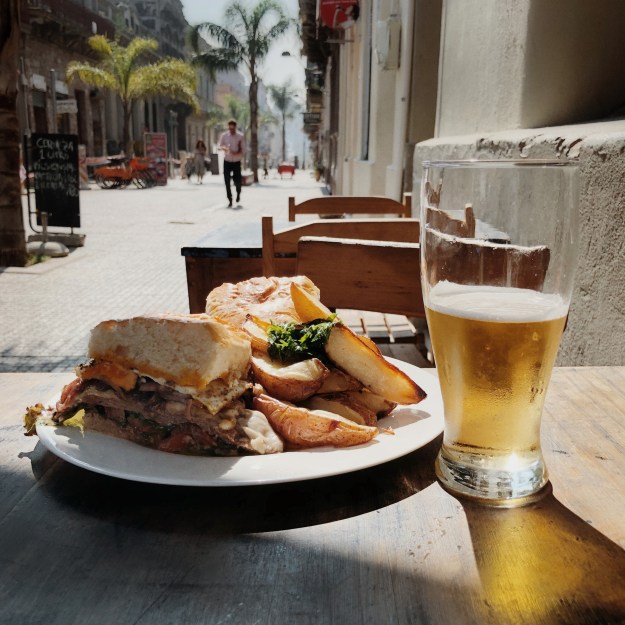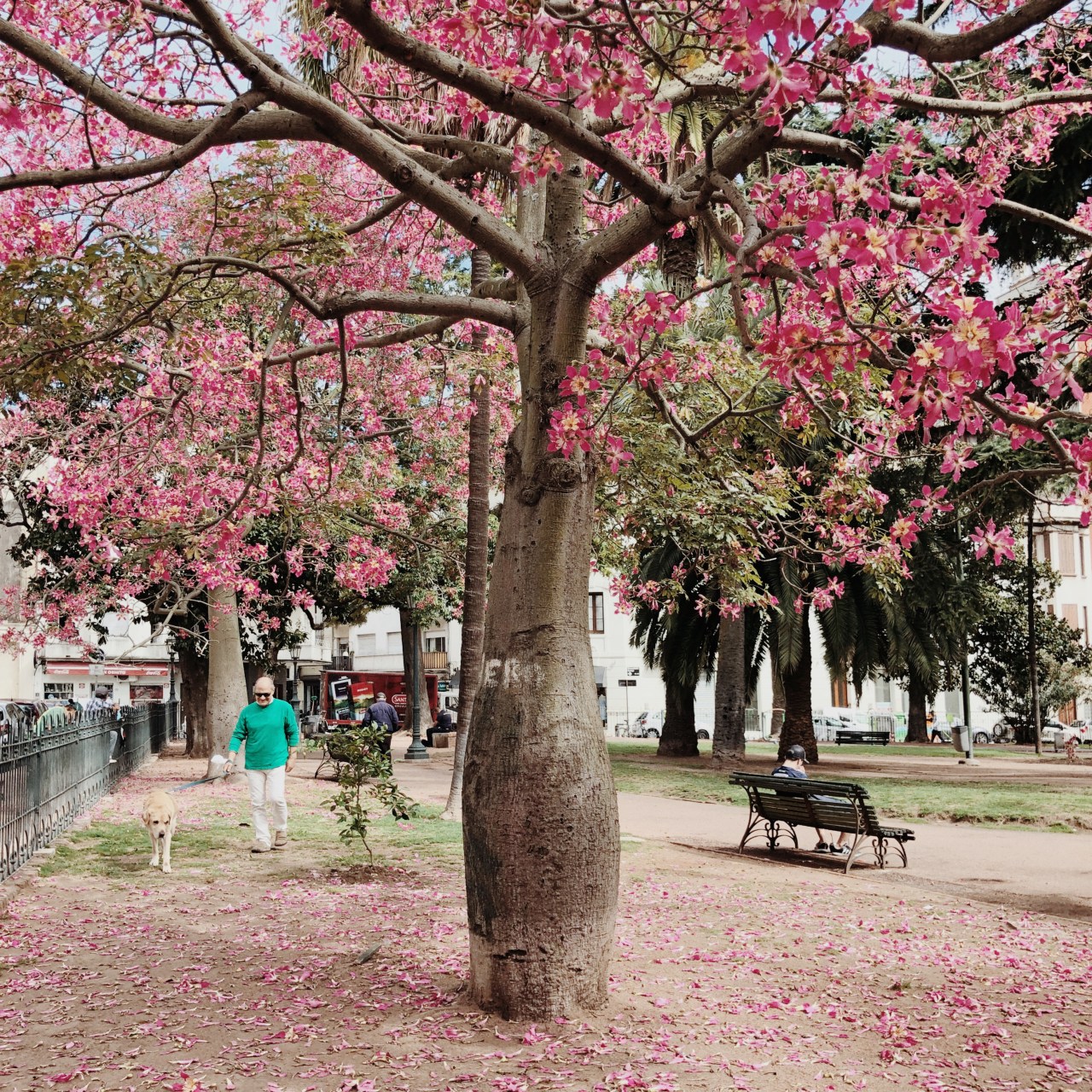In Montevideo, the pace is slow, trees form canopies over the streets, and the air smells like churrasco—grilled meat. People use public spaces, whether it’s the waterfront rambla or the Plaza de Independencia. You’ll see old men in the parks drinking yerba mate and smoking marijuana (it’s legal here), friends sitting down to leisurely lunches that last all afternoon, families strolling along the beach. It’s small—fewer than two million people live here—and you can walk the entire city in a day.
Locals say the historic Ciudad Vieja is experiencing a renaissance. Artists—drawn by cheap rents and ample space—are moving in the area’s old buildings. Restaurants and hostels and nice shops are coming in too. The Mercado del Puerto, once a local food market, is filled with restaurants—places selling grilled meats and empanadas. It reminded me of Berlin or Brooklyn.
Throughout the city, you’ll see old colonial buildings, cafés, and an endless number of bookstores. Uruguayans are warm and trusting, and as a Brazilian—I’m from Rio Grande do Sul, the southern Brazilian state that borders Uruguay—I was struck by how safe I felt in the city.
Shouldn’t every place should be like Montevideo?













